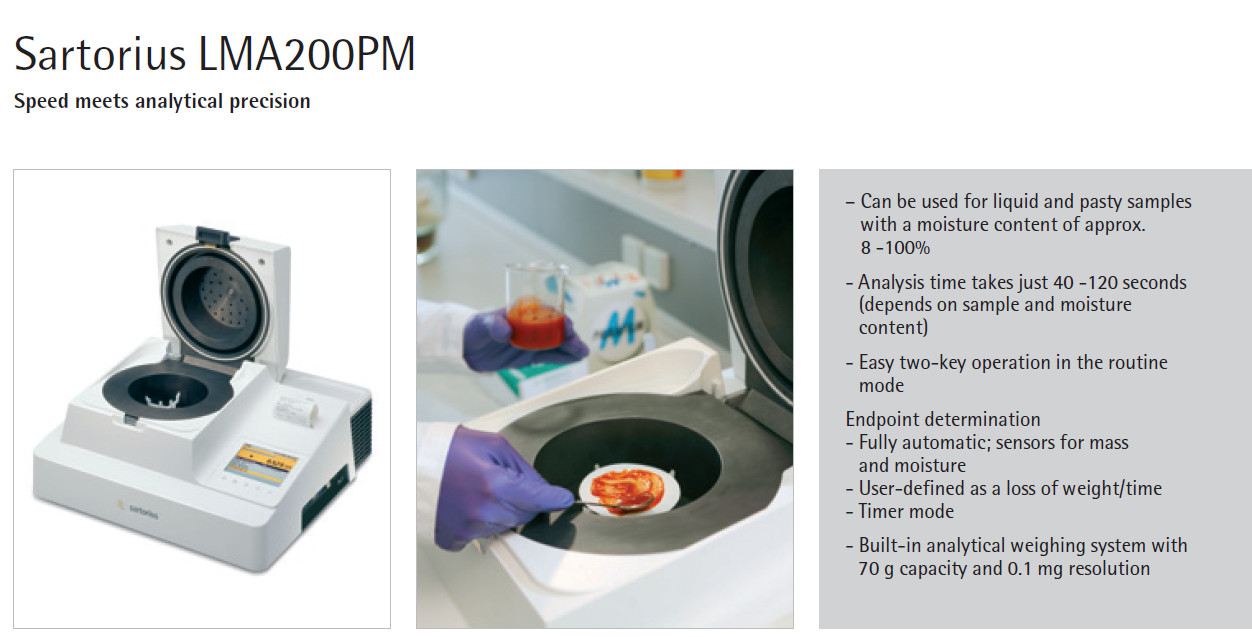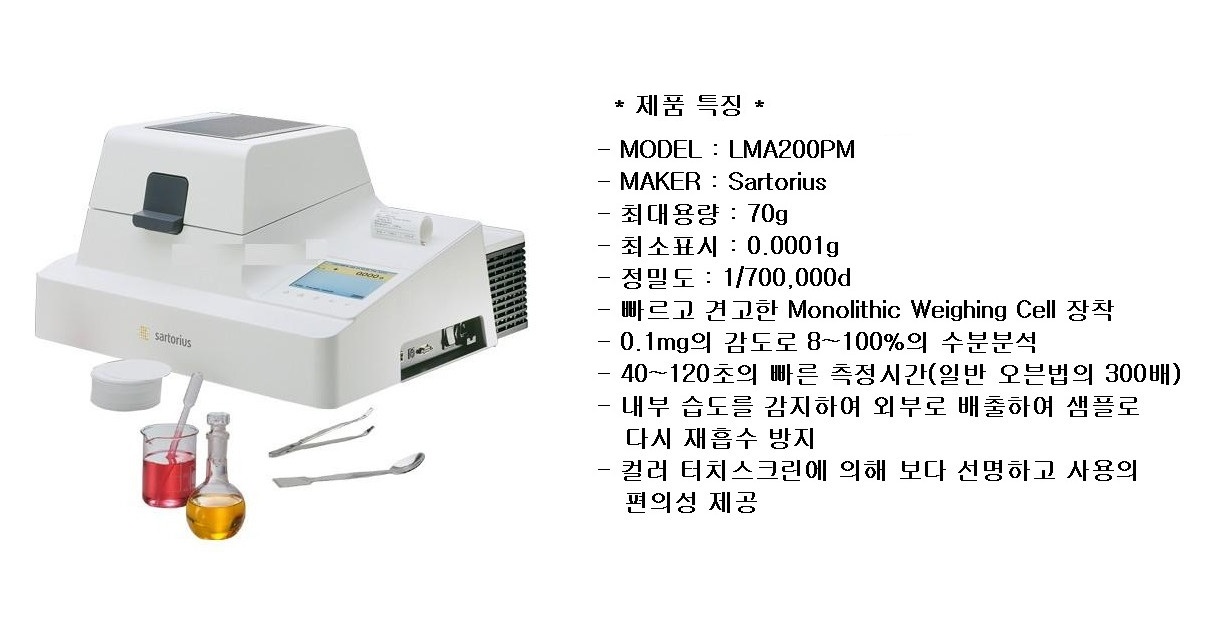

If the sample contains a high moisture
content, microwave drying is the fastest and
most effective thermogravimetric method
(loss-on-drying principle) for moisture
analysis. Developed for measuring moisture
content ranging from approx. 8% to 100%,
the LMA200PM performs moisture analysis
in a fraction of the time it takes for other
thermogravimetric methods. It delivers results
between approx. 40–120 seconds on average.
With a cylindrical design, a focused emission
of microwave energy is channeled vertically
through dual apertures at the bottom of the
chamber. This concentrates the microwave
energy specifically to the sample. During the
test, a carousel spins the sample, permitting
an even distribution of microwave energy.
This prevents hot and cold spots from occurring,
a familiar problem with conventional
microwave analyzers.
Built-in analytical weighing system
The moist and dry weight of the sample
required for calculating the loss of moisture
is measured by a built-in analytical weighing
system featuring 0.1 mg resolution. Thanks
to its monolithic design (the cell is robotically
etched from a single block), this system is
particularly suitable for use in a moisture
analyzer, because it considerably reduces zero
point drift during heat exposure compared
with classic weighing systems.
Intelligent endpoint determination
A moisture sensor integrated in the exhaust
system of the sample chamber monitors the
progress of drying. When the measurement
begins, the moisture of the air inside the sample
chamber continuously increases as water
evaporates from the sample. Once the sample
has dried and no longer releases water, the
air moisture content drops back to its original
level – a clear indication of the end point.
At the same time, the built-in weighing system
monitors the weight progression and
confirms when the sample reaches a constant
weight. This dual monitoring system ensures
optimal moisture analysis results.
High speed
Two factors play a major role for ultra-fast
measurements. First, the sample must absorb
microwave energy within the shortest time
possible and transform this into heat energy.
For this purpose, the LMA200PM has a
cylindrically shaped sample chamber that
optimally focuses the microwave radiation
on the sample. Second, the resulting water
vapor must be transported away from the
sample as fast as possible to obtain fast
analysis results. To accomplish this, a sample
is applied to a glass fiber pad that allows
water vapor to evaporate not only from top
of the pad and upward through the sample,
but also from the bottom of the pad. An
exhaust system draws water vapor out of the
sample chamber, thus preventing the effects
of condensation.
상품정보고시
| 제품명 |
미량수분계, LMA200PM |
| 판매가격 |
18,120,000원 |
| 브랜드 |
Sartorius |
| 원산지 |
독일 |
| 제조사 |
Sartorius |
반품교환 |
구입제품의 이상이 있을 경우
- 구입후 7일 이내에 동일제품으로 교환 가능하며 운송비는 판매자 부담입니다.
- 다른 제품으로 교환, 또는 이상이 없는 제품과 함께 교환을 원하실 경우 구매자께서 운송비를 부담합니다.
구입제품의 이상이 있을 경우 (색상,사이즈,다른상품교환)
- 구입후 7일이내 교환 가능하며 구매자께서 운송비를 부담합니다.
!! 주의사항
비닐포장 및 Tag의 폐기 또는 훼손 등으로 상품 가치가 멸실된 경우에는 제한.
반품시에 해당 사은품이 있을 경우 같이 보내주셔야 합니다. |
배송안내 |
결제후 3~7일 이내에 상품을 받아 보실 수 있습니다.
국내 최대의 물류사 KG로지스택배를 통하여 신속하고 안전하게 배송됩니다.
모든 제품은 착불 발송됩니다. 단 30만원 이상 구입시 택배무료배송입니다.
(제주도를 포함한 도서,산간지역은 항공료 또는 도선료가 추가됩니다.)
화물(용달),퀵 이용은 구매자께서 운송비를 부담합니다.
|
결제안내 |
결제방법은 신용카드, 국민/BC(ISP), 무통장입금, 적립금이 있습니다.
정상적이지 못한 결제로 인한 주문으로 판단될 때는 임의로 배송이 보류되거나,주문이 취소될 수 있습니다. |













